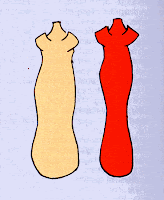Swine dysentery (SD), is caused by a spirochaetal bacterium called Brachyspira hyodysenteriae. This organism causes a severe inflammation of the large intestine with a bloody mucous diarrhoea (i.e. dysentery).
Disease is common in pigs from 12 to 75kg but severe cases occur occasionally in sows and their sucking piglets.
SD will survive outside the pig for up to seven weeks in cold moist conditions but it dies out in two days in dry warm environments.
Spread through the herd is slow, building up in numbers as the dose rate of the causal agent builds up in the environment. Pigs that recover develop a low immunity and rarely suffer from the disease again.
The high cost of disease is associated with mortality (low), morbidity (high), depression of growth and feed conversion efficiency, and costs of continual in-feed medication.
The incubation period in field cases is normally 7 to 14 days but can be as long as 60 days. Pigs may develop a sub-clinical carrier state initially and then break down with clinical disease when put under stress or when there is a change of feed.
Symptoms
Sows
- Clinical disease in sows is uncommon unless new disease appears in the herd.
Piglets
- Severe acute dysentery may occur.
- Sloppy light brown faeces with or without mucous or blood.
- Loss of condition.
- Sows become symptom less carriers.
Weaners and Growers
The first signs are:-
- Sloppy diarrhea, which stains the skin under the anus.
- Initially the diarrhea is light brown and contains jelly-like mucus and becomes watery.
- Twitching of the tail.
- Hollowing of the flanks with poor growth.
- Partial loss of appetite.
- Slight reddening of the skin.
As the disease progresses:
- Blood may appear in increasing amounts turning the faeces dark and tarry.
- The pig rapidly loses condition.
- Becomes dehydrated.
- A gaunt appearance with sunken eyes.
- Sudden death sometimes occurs mainly in heavy finishers.
Causes / Contributing factors
- Pigs become infected through the ingestion of infected faeces.
- Spread is by carrier pigs that shed the organism in faeces for long periods.
- It may enter the farm through the introduction of carrier pigs.
- Mechanically in infected faeces via equipment, contaminated delivery pipe of feed vehicles, boots or birds.
- It can be spread by flies, mice, birds and dogs.
- Stress resulting from change of feed may precipitate.
- Poor sanitation and wet pens enhance the disease.
- Overcrowding.
- It is a major disease in the growing pig but the breeding female can become a carrier for a long period of time and therefore acts as a potential source of infection to other pigs.
Diagnosis
This is based on the history, the clinical picture, post-mortem examinations, laboratory tests on faecal smears and the isolation and identification of S. hyodysenteriae by serological and biochemical tests and DNA analysis. Identification requires specialised procedures which are not available in every laboratory.
Post-mortem examinations show that the lesions are confined to the large bowel and sometimes the greater curvature of the stomach.
The disease has to be distinguished from colitis caused by other spirochetes, non-specific colitis, PIA and bloody gut (PHE), acute salmonella infections and heavy infections of the whip worm, trichuris.
How to spot Swine Dysentery
The disease usually affects olders pigs
especially those in the starter-grower stages
especially those in the starter-grower stages
Brownish Diarrhea
Diarrhea progresses to brownish red
with a much more liquid consistency
Lesions are found in the large intestine
Typical shape of the swine dysentery infected pigs








No comments:
Post a Comment